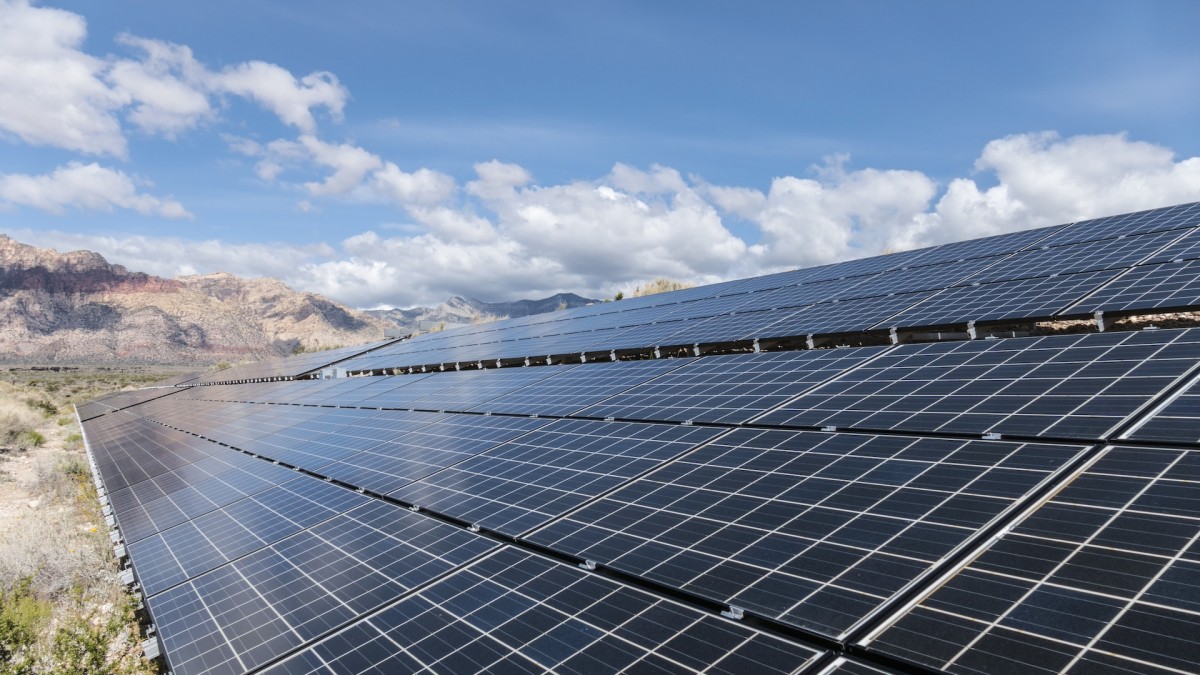
Last week, the Bureau of Land Management (BLM) announced plans to streamline and expedite solar energy development in the West with a newly revised Western Solar Plan. The document, while technically a “draft programmatic environmental impact statement,” lays out options for building new projects on BLM land in 11 western states: Arizona, California, Colorado, Idaho, Montana, Nevada, New Mexico, Oregon, Utah, Washington, and Wyoming.
Of the five development options listed in the plan, the agency identifies one that stands out above the rest, allowing for solar projects on BLM lands within 10 miles of existing and/or planned transmission lines greater than 100 kV, with the exception of “resource-based exclusion areas.” In total, the plan would allow solar projects on an additional 22.2 million acres of western public land.
Resources exclusion criteria include, to some extent, big-game migration corridors and big-game winter ranges. However, the plan is vague regarding impacts on wildlife. “The magnitude of impacts depends on the wildlife that occupy the area prior to construction, and the timing of construction activities relative to the crucial life stages of wildlife,” the plan states. To determine what specific lands are eligible for exclusion, the plan advises that projects must be in line with more localized BLM Resource Management Plans.
Local management plans, however, also tend to be relatively vague when addressing wildlife concerns. Take, for example, the Resource Management Plan for Rawlins, Wyoming—which contains the winter range for the mule deer that summer in southern Yellowstone, the Wyoming Range, and the Wind River Range. According to the plan, “Surface disturbing and disruptive activities within big game crucial winter range would require the use of best management practices designed to reduce the amount of human presence and activity during the winter months.” When the plan was last revised in 2008, the agency briefly considered prohibiting disruption in winter range year-round but removed the clause in the final draft.
Now, under the new Western Solar Plan, development might be permitted in such areas, so long as construction takes place outside of winter months. In fact, the Rawlins area is identified as having huge potential for solar development: 991,932 acres meet development criteria—the fifth largest swath of all BLM resource management units in the West. The neighboring Green River unit—critical pronghorn and deer winter range—has 414,627 acres potentially open to development. On top of that, Resource Management Plans tend to be old, and sometimes outdated. The Green River plan was last updated in 1997, years before the bulk of the research on Wyoming’s mule deer migration (one of the largest and longest ungulate migrations in North America) was conducted. Other Land Use Plans across the West are as old as 1980.
On the other hand, while there might be lots of BLM land in Wyoming and other states open to development, realistically, only a small portion will actually see new projects. Of the 22 million total acres identified, the BLM predicts that only about 3% (697,809 acres) of that will need to be developed to meet Biden-administration clean energy goals.
Already, a handful of projects are being pushed through. The BLM is advancing four projects on public land in Nevada, totaling 1,500 megawatts of solar energy (a single megawatt can power about 175 homes). One such project is the Rough Hat Clark County Solar Project, west of Las Vegas, which has already received local pushback from environmental groups.
The proposed site is home to endangered Mojave desert tortoises, as well as hundred-year-old Joshua trees. Groups in opposition, such as Basin & Range Watch, cite the destruction of natural resources, loss of public access, and water needs for dust control as negative impacts. Additionally, power from the project will be sold to neighboring California, raising animosity from local residents that they’ll be stuck with the consequences but reap little reward. In December 2021, local county commissioners voted unanimously to oppose the project, but the BLM still appears intent on pushing it through.
In fact, as part of a new Draft Environmental Impact Statement, the BLM outlines the need to amend the area’s Resource Management Plan to allow for more surface-level disturbance in the area. That could set a precedent for simply amending development guidelines when they are at odds with new construction.
Among renewable-energy options, solar has a small visual footprint on the landscape (much smaller than wind turbines since they can’t be seen from a distance) and doesn’t require huge infrastructure (like hydro dams). It’s a step toward moving away from fossil fuels, a project that, broadly speaking, many hunters and conservationists support.
But others are concerned both about the long-term impacts of solar panel farms and the short-term consequences that construction will bring.
“As a hunter, I’d like to see what’s left of the good wildlife habitat on BLM lands remain productive,” MeatEater’s Brody Henderson said. “Call it green energy if you want, but all the necessary infrastructure construction, road building, and increased vehicle and human activity needed for something on such a massive scale will likely result in even more of the same issues for wildlife that are already associated with fossil fuel extraction operations on BLM lands. That sure doesn’t seem to fall in line with the BLM’s recent well-publicized pledge to protect more wildlife habitat.”
Ultimately, the Western Solar Plan, if approved, will require hunters, anglers, and other public land users to be even more vigilant as new projects are proposed and must undergo public comment periods.




Conversation